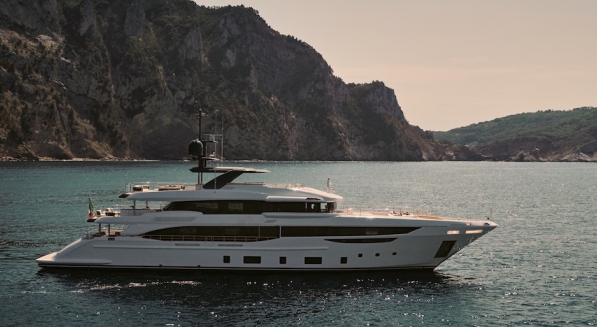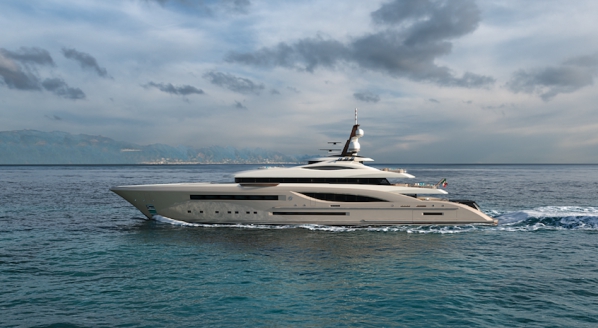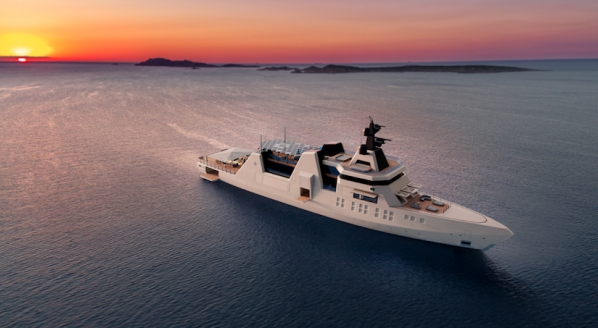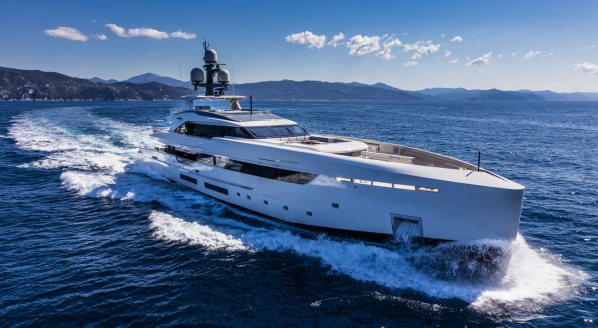Negating natural conflict
How compromise and rational discussion can produce optimal results during the build process…
Build processes and schedules are not always in harmony with rapid technological advancement, but compromise and rational discussion can produce results that satisfy the needs of all stakeholders.
The Pesse canoe, believed to be the oldest known boat in the world, was discovered in the Netherlands and is thought to have been constructed between 8040 and 7510 BC. By stark contrast, the first iPhone was launched in 2007. However, these seemingly incongruous inventions are now inextricably linked in the development of every superyacht project. Shipbuilding and technological innovation have, and always will, go hand in hand. But are the established build processes of the shipyard and the pace of technological change always in sync?
“There is a systemic challenge that businesses like shipyards have to face and it has everything to do with the varying pace of technological advancement,” says Zeb Robin, technical director at Bond Technology Management. “Shipyards are absolutely fantastic at what they do. Where it concerns the heavy equipment and machinery that is vital to the build and operation of the vessel, the shipyards are fantastic, but this machinery evolves and matures at a far slower pace than the technology world. It requires an altogether different set of skills.”
Indeed, one could argue that given the already complex nature of super- yachts and the various systems on board, it would be unrealistic that shipyards should be expected to keep pace with all forms of technological advancement. The core mechanical and technical role of the shipyard is to build a vessel safely, soundly, on time and on budget – with all the elements of luxury required to transform a boat into a superyacht. The rate of innovation of mechanical systems, while still evident, is relatively sedate when compared to that of AV/IT – especially considering that the first diesel-powered ship was launched in 1912.
“Shipyards, as has been previously stated, are very good at their art of building yachts, and to build them efficiently and to a schedule requires a repeatable process, says Will Faimatea, director and founder of Bond. “I noticed the disconnect during my times on board yachts as an ETO between 1994 and 2003 and considered the idea of consultancy for AV/IT/Communications/ Security systems back then as owners seemed to be surprised at how the AV/IT/Comms system performed. What appeared to be an opportunity for technology consultants back in 2003 has grown to a point where most builds will put a company or person into this position to specify or design and manage the implementation of these systems.”
“Making a superyacht is a unique skill and it requires years of expertise provided by groups of talented people who pool their craftsmanship and expertise to work together,” says Casper Kleiman, product marketing manager at VBH. “A great deal of prior knowledge goes into a new project, the result of years of trying new things, failing, trying again and succeeding. These practical experiences make all the difference when it comes to building superyachts.
“It is also why yacht construction follows a logical process and a well-rehearsed rhythm. This approach has proven over the years to lead to the best possible results for a superyacht and her owners. New features, functions or experiences are bound to have an impact on a well-thought-out building process. Using new possibilities requires rethinking, educated guesses and an element of uncertainty.”
If you install an AV/IT project at the earliest opportunity during a superyacht build – especially on the largest projects that can take up to four years to complete – that system will be antiquated by current standards by the end of the project. Therefore, there is a requirement to balance construction needs and owner expectations when it concerns the latest and greatest technologies. In some instances, this means delaying purchasing and other final decisions until as late in the build as possible. While this may sound daunting, it doesn’t necessarily have to be.
“It can be breath-taking at times to be racing towards the brick wall that is delivery, and to be surgically going through the project and making small design changes to ensure that what the owners get in their AV/IT systems are fresh,” says Robin. “Looking from the outside, I can see why people might think this is a little terrifying and that is why some yards are sometimes hesitant to do it. There is a perfectly natural conflict of interest here because shipyards, quite rightly, want to be on schedule and on budget, which explains why they are occasionally risk-averse. They do not want changes made midstream that could in any way compromise their build principles.”
That said, this conflict of interest is by no means a deal-breaker nor, if managed properly, need it have a negative impact on a project. Indeed, according to Robin, a rational approach to such issues can significantly reduce the risk of a potential conflict having a noticeable impact on a build. Dealing with new technologies or processes can be extremely difficult when managing a tight time frame. A certain level of control and compromise is required to manage such a project effectively. “What should take precedence when it comes to building a yacht? A proven approach or the latest technology? It is a difficult choice to make,” adds Kleiman.
“It’s a surgical, rational process,” explains Robin. “When a decision has to be made because the ceilings are getting closed in four months, and you have to make a final decision on the types of antennae for the WiFi systems that are going on board, then there is no room to postpone. If you delay ceiling closures, for instance, it is going to have a knock- on effect for various elements of the project, and no one is going to be happy and that is a worst-case scenario.
“However, if the yard is asking for a decision to be made a year before it will actually impact the build, it’s the responsibility of the consultant, integrator or owner’s team to explain to the yard, in a clear and rational manner, what the benefits of delaying for a year are. This will require in-depth analysis of those decisions that have already been made, such as cabling and device IDs, and a clear outline of why a delay would be beneficial.”
Before exploring the various stages of the superyacht build, it must be noted that not all owners are after the latest and greatest technologies. It’s no secret that most shipyards, as well as AV/IT integrators, would prefer to use proven platforms and systems because of the potential to reduce cost, risk and delays. For many owners, this is far more appealing than spending vast amounts of money on state-of-the-art technology, and to try to upsell the owner can be unwise. It’s imperative, therefore, that to avoid problems later in a project, the first step is to determine what a client actually wants.
“Not everything on board needs to be the latest and greatest,” says Kleiman. “Different clients’ value different aspects of luxury. Some enjoy solitude and concert-level audio, others prefer watching movies with family or hosting big parties with friends. Whatever the main pleasure is, that’s where the yacht must shine.
“Introducing new possibilities requires close collaboration between the yard and technology professionals. The latter have more experience in the specific changing nature of possibilities and can assure the yard how the impact on building can be minimal while having a maximum impact on owner experience.”
Robin says that ensuring a client gets what they want is a huge part of any project. It may take several months to map out the functional requirements for any superyacht and this is partly due to the language barrier that occurs when discussing technology. Technology is tricky and ever changing, and while owners know how today's systems work, the rate of progress means they may not be able to accurately communicate what they require from a system that will be integrated in four years’ time.
“We often speak to clients who say, ‘I want the best’,” says Robin. “However, when we show them how much ‘the best’ costs, many realise that what they actually require is something less. Part of the process during the functional specification phase is to enable the owner or their team to see the specification on paper and understand what the end cost is likely to be. At the end of the day, they have an idea about how much money they are willing to spend, but the system you have discussed must also meet their expectations.”
When it comes to the fast-paced technological systems that fall within the broad AV/IT designation such as satcomms, entertainment systems and security, a fair tendering process can be key to project success. Nevertheless, many projects are often conducted using trusted representatives, which is perfectly acceptable for the less complex projects mentioned earlier. However, the risk of automatically using a trusted partner is that the resolution of the conflict of interests also discussed previously will be weighted in the shipyard’s favour.
“The next thing is that during the design and build phase, it is imperative that there is good communication and decision-making practices throughout the project,” adds Robin. “If design and product decisions are improperly logged, the project can begin to fall apart. Interior drawings have to be constantly reviewed at an aggressive pace as they are generated to make sure that all the build data is accurate, all the way down to device ID codes and individual cables.”
Some of the more common errors when it comes to the integration of technology – avoidable in many cases – are a lack of space, insufficient power output or inappropriate infrastructure. During design or mechanical meetings, special care should be taken to ensure there is appropriate space apportioned for the technology specified. “The typical oversite is that the shipyard installs a piece of technology in an area that is too small or with poor ventilation and the system overheats,” says Robin. “Invariably, this will occur during periods that require high power outputs, such as parties. And no one wants the systems to fail during a party!”
And Kleiman concludes, “Without innovation, things stay the same. No one benefits when you obstruct progress. We want superyachts to guide the way towards a more desirable way of living. Yachts serve as a showcase of the ultimate luxury – and that’s why they are forever changing. Generations of yacht-builders have developed trusted ways of building. Technology plays a major role in the lives of people, at home and on-board superyachts too. With technologies changing fast, integrating them into a yacht, the yacht-building process and the operation of a yacht is a skill all of its own.”
Today, superyachts and techno- logically advanced systems go together to create a luxury experience that satisfies every owner and guest requirement. While the end product is frequently phenomenal, shipyards and consultants must constantly work with one another to adapt the process and systems to ensure the end results satisfies the shipyard’s core promises: to be on time, on budget and to a high quality, as well as ensuring there is room for compromise to meet the requirements of owners and guests from an AV/IT perspective.
This article first appeared in issue 201 of The Superyacht Report
Profile links
Bond Technology Management & Consultancy
NEW: Sign up for SuperyachtNewsweek!
Get the latest weekly news, in-depth reports, intelligence, and strategic insights, delivered directly from The Superyacht Group's editors and market analysts.
Stay at the forefront of the superyacht industry with SuperyachtNewsweek
Click here to become part of The Superyacht Group community, and join us in our mission to make this industry accessible to all, and prosperous for the long-term. We are offering access to the superyacht industry’s most comprehensive and longstanding archive of business-critical information, as well as a comprehensive, real-time superyacht fleet database, for just £10 per month, because we are One Industry with One Mission. Sign up here.
Related news

When rationality meets elegance
The Diamond 145 is the culmination of Benetti’s experiences across a variety of size ranges
Fleet
.jpg)
The first 50m superyacht of the Riva Superyachts Division in Ancona
The vessel has been optimised to be lightweight yet resilient
Fleet


Combining naval history with modern technology
Fincantieri Yachts shares insights into 80m concept, VIS
Design

An ethical future
How financial, social and environmental development will help reshape the assumptions about yacht ownership
Business

Green and efficient: the 50m Tankoa S501 Hybrid
The model pushes the boundaries in terms of efficient fuel consumption and on-board comfort
Fleet
Related news
When rationality meets elegance
5 years ago
Fincantieri Yachts’ smallest concept to date
5 years ago
Combining naval history with modern technology
5 years ago
An ethical future
5 years ago
Green and efficient: the 50m Tankoa S501 Hybrid
5 years ago
NEW: Sign up for
SuperyachtNewsweek!
Get the latest weekly news, in-depth reports, intelligence, and strategic insights, delivered directly from The Superyacht Group's editors and market analysts.
Stay at the forefront of the superyacht industry with SuperyachtNewsweek




